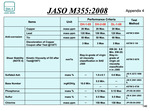I have a 1996 Land Cruiser (HDJ81) with the 24v 1HD-FT engine. I live in Japan, so the oil available is JASO spec. I do have access to some American brands on base, but the selection isn't great.
There are two main diesel oils specifications for truck engines:
What oil would you run in one of these old mechanical Toyota diesel engines that predate the ultra low sulfur diesel oil and fuel?
Ok, now what if I told you my cruiser does have an A'PEX CATA aftermarket catalyst which seems to have been fitted because of the Tokyo retrofit program. But it's not a regenerating DPF or a SCR that uses DEF. It really just looks like a gasoline car catalyst. Would this thing get messed up from using DH-1 oil? I don't suspect that it really does a whole lot as it's been mounted all the way at the end of the exhaust pipe and probably doesn't get that hot. Maybe I should just cut it off anyways as Okinawa doesn't care about diesel exhaust.
There are two main diesel oils specifications for truck engines:
- JASO DH-1: A high sulphated ash oil designed for the lubrication of Heavy Duty Diesel Engines, not suitable for exhaust after treatment devices.
- JASO DH-2: A low sulphated ash oil designed for the lubrication of Heavy Duty Diesel Engines, particularly when equipped with exhaust after treatment devices.
What oil would you run in one of these old mechanical Toyota diesel engines that predate the ultra low sulfur diesel oil and fuel?
Ok, now what if I told you my cruiser does have an A'PEX CATA aftermarket catalyst which seems to have been fitted because of the Tokyo retrofit program. But it's not a regenerating DPF or a SCR that uses DEF. It really just looks like a gasoline car catalyst. Would this thing get messed up from using DH-1 oil? I don't suspect that it really does a whole lot as it's been mounted all the way at the end of the exhaust pipe and probably doesn't get that hot. Maybe I should just cut it off anyways as Okinawa doesn't care about diesel exhaust.

